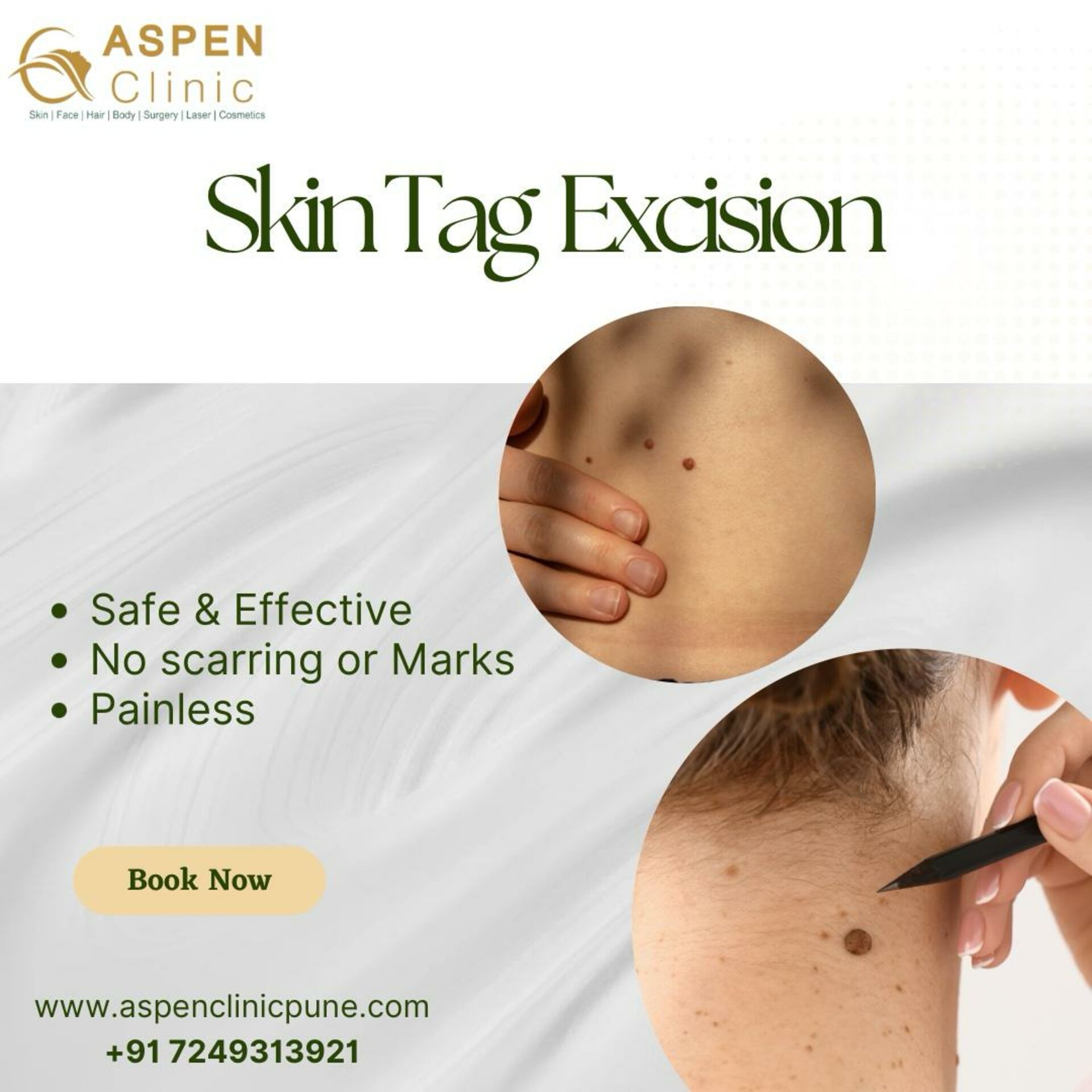Skin Tag Removal Treatments | Dr. Hina Khan
Skin tags, medically known as acrochordons, are small, benign growths that commonly occur on the skin. They are soft, flesh-colored, or slightly darker, and typically hang off the skin by a thin stalk or peduncle. Skin tags can vary in size, ranging from a few millimeters to several centimeters in diameter.
Skin tags are composed of collagen fibers, blood vessels, and sometimes fat cells. Skin tags can form on various parts of the body, but they are most commonly found in areas where the skin folds or rubs against itself. Some of the common areas where skin tags tend to form include:
- Neck: Skin tags are frequently found on the neck, particularly in the area where the skin meets the collar or where necklaces may rub against the skin.
- Armpits: Skin tags can develop in the armpits due to friction from clothing and the folding of skin in this area.
- Groin: Skin tags may form in the groin area, especially in individuals who are overweight or obese, where skin folds are more prominent.
- Eyelids: Skin tags can occur on the eyelids, although they are less common in this area. Eyelid skin tags may be more noticeable due to their location and can sometimes interfere with vision if they grow large enough.
- Under the Breasts: Skin tags often develop under the breasts, particularly in women with larger breasts, where skin-to-skin contact and friction are more prevalent.
- Genital Area: Skin tags can also form in the genital area, including on the penis, scrotum, vulva, or labia. However, they are less common in these areas and may require careful evaluation to distinguish from other skin conditions.
- Back: Skin tags may appear on the back, especially in areas where clothing rubs against the skin or where there are skin folds.
- Face: While less common, skin tags can also develop on the face, including on the cheeks, eyelids, and around the eyes.
While skin tags are generally harmless and painless, they can sometimes become irritated or inflamed due to friction from clothing jewelry shaving, or other forms of grooming. In rare cases, skin tags may bleed if they are accidentally torn or scratched.
Skin tags are more common in older adults and individuals who are overweight or obese. Hormonal changes during pregnancy may also increase the likelihood of developing skin tags.
Treatment for skin tags is typically not necessary unless they are causing discomfort or cosmetic concerns.

What are the treatments for skin tag removal?
Radiofrequency treatment for skin tags is generally safe and effective when performed by a qualified healthcare professional. However, as with any medical procedure, there are potential risks and side effects to consider, such as temporary discomfort, redness, swelling, or changes in skin texture. Additionally, not all skin tags may be suitable for RF treatment, and your healthcare provider will determine the best course of action based on your individual needs and medical history.
It's important to consult with a qualified healthcare provider to discuss your options for skin tag removal and to determine the most appropriate treatment plan for your specific situation.
Radiofrequency (RF) cutting of skin tags involves using a specialized device that utilizes RF energy to precisely cut and cauterize skin tags. Here's how the procedure works:
- Preparation: Before the procedure, the area surrounding the skin tag is cleaned and numbed with a local anesthetic / or with a topical anesthetic to minimize discomfort during the treatment.
- Application of RF Device: The RF cutting device is applied to the base of the skin tag. The device emits RF energy that heats the tissue, simultaneously cutting through the skin tag and cauterizing the blood vessels to minimize bleeding.
- Removal of Skin Tag: As the RF device cuts through the skin tag, it also seals the wound, reducing the risk of infection and promoting faster healing. The skin tag is then removed cleanly and precisely.
- Post-procedure Care: After the skin tag is removed, a topical antibiotic ointment or dressing may be applied to the area to aid in healing and reduce the risk of infection. The doctor will provide specific post-procedure instructions for care and follow-up.
What are the advantages of RF treatment for skin tags removal?
RF cutting of skin tags offers several advantages over traditional methods of removal, such as scalpel excision or scissors or cryotherapy (freezing), cauterization (burning), excision (cutting), or ligation (tying off the blood supply). These advantages include:
- Precision: RF cutting allows for precise and controlled removal of skin tags, minimizing damage to surrounding tissue.
- Cauterization: The RF energy cauterizes blood vessels as it cuts, reducing bleeding and promoting faster healing.
- Minimized discomfort: The use of local anesthesia/ topical anesthesia minimizes discomfort during the procedure, and the cauterization process helps to reduce post-procedural pain and discomfort.
- Reduced scarring: RF cutting typically results in minimal scarring compared to other removal methods.
It's important to have RF cutting of skin tags performed by a qualified doctor or surgeon to ensure safety and optimal results. While RF cutting is generally safe and effective, there may be some potential risks and side effects, such as temporary discomfort, redness, swelling, or changes in skin texture. Your doctor will discuss these risks with you and determine if RF cutting is the appropriate treatment option for your specific situation.
Skin tag removal treatment is available at ASPEN Clinic, NIBM Road, Pune by Dr Hina Khan.